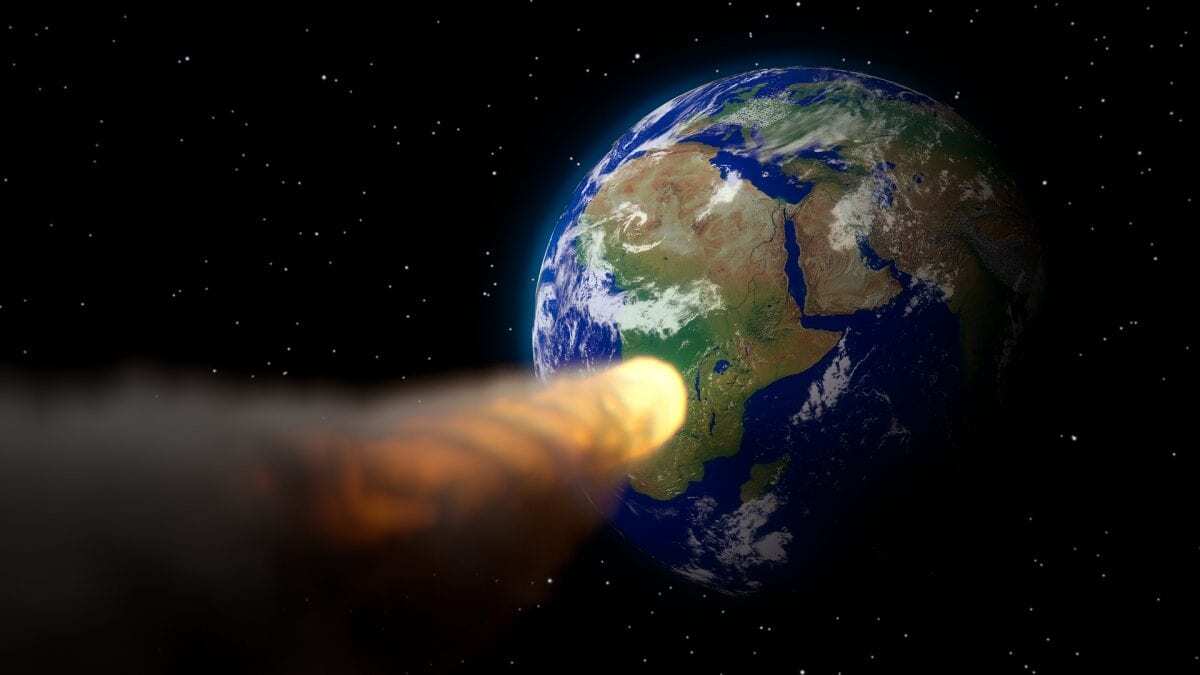A team of scientists from South Africa has discovered evidence partially supporting a hypothesis that Earth was struck by a meteorite or asteroid 12 800 years ago, leading to global consequences including climate change, and contributing to the extinction of many species of large animals at the time of an episode called the Younger Dryas.
The team, led by Professor Francis Thackeray of the Evolutionary Studies Institute at the University of the Witwatersrand in Johannesburg, South Africa, discovered evidence of a remarkable “platinum spike” at a site called Wonderkrater in the Limpopo Province, north of Pretoria in South Africa. Working with researcher Philip Pieterse from the University of Johannesburg and Professor Louis Scott of the University of the Free State, Thackeray discovered this evidence from a core drilled in a peat deposit, notably in a sample about 12 800 years old. This research was published in Palaeontologia Africana.
Noting that meteorites are rich in platinum, Thackeray said “Our finding at least partially supports the highly controversial Younger Dryas Impact Hypothesis (YDIH). We seriously need to explore the view that an asteroid impact somewhere on earth may have caused climate change on a global scale, and contributed to some extent to the process of extinctions of large animals at the end of the Pleistocene, after the last ice age.”
Many mammals became extinct in North America, South America and Europe at the time of the Younger Dryas. In South Africa a few extraordinary large animal species became extinct, not necessarily at exactly 12 800 years ago, but close to that period. These megafauna include a giant African buffalo, a large zebra, and a very big wildebeest.
Human populations may also have been indirectly affected at the time in question. In North America there is a dramatic termination of the stone tool technology of Clovis people. Remarkably, archaeologists in South Africa have detected an almost simultaneous termination of the Robberg stone artefact industry associated with people in some parts of the country, including the area around Boomplaas near the Cango Caves in the southern Cape, close to the town of Oudshoorn.
“Without necessarily arguing for a single causal factor on a global scale, we cautiously hint at the possibility that these technological changes, in North America and on the African subcontinent at about the same time, might have been associated indirectly with an asteroid impact with major global consequences,” says Thackeray. “We cannot be certain, but a cosmic impact could have affected humans as a result of local changes in environment and the availability of food resources, associated with sudden climate change.”
At Wonderkrater, the team has evidence from pollen to show that about 12 800 years ago there was temporary cooling, associated with the “Younger Dryas” drop in temperature that is well documented in the northern hemisphere, and now also in South Africa. According to some scientists, this cooling in widespread areas could at least potentially have been associated with the global dispersal of platinum-rich atmospheric dust.

A large crater 31 kilometres in diameter has been discovered in northern Greenland beneath the Hiawatha Glacier. “There is some evidence to support the view that it might possibly have been the very place where a large meteorite struck the planet earth 12 800 years ago,” says Thackeray. “If this was indeed the case, there must have been global consequences.”
Thackeray’s team believes their discovery of a platinum spike at about 12 800 years ago at Wonderkrater is just part of the strengthening view that an asteroid or cometary impact might have occurred at that time.
This is the first evidence in Africa for a platinum spike preceding climate change. Younger Dryas spikes in platinum have also been found in Greenland, Eurasia, North America, Mexico and recently also at Pilauco in Chile. Wonderkrater is the 30th site in the world for such evidence.
“Our evidence is entirely consistent with the Younger Dryas Impact Hypothesis” says Thackeray.
The discovery in South Africa is expected to be integrated with those made in other parts of the world, recognising that the source of the platinum at Wonderkrater could hypothetically be cosmic dust that was dispersed in the atmosphere after a meteorite impact in Greenland.
The probability of a large asteroid striking Earth in the future may seem to be low, but there are thousands of large rocks distributed primarily between Jupiter and Mars. One in particular, classified as Apophis 99942, is referred to as a “Potentially Hazardous Asteroid”. It is 340 meters wide and will come exceptionally close to the Earth in 10 years’ time.
“The closest encounter will take place precisely on Friday April 13, 2029,” says Thackeray. “The probability of the Apophis 99942 asteroid hitting us then is only one in 100 000, but the probability of an impact may be even higher at some time in the future, as it comes close to Earth every 10 years.”
UNIVERSITY OF THE WITWATERSRAND4
Header Image – Pixabay License





